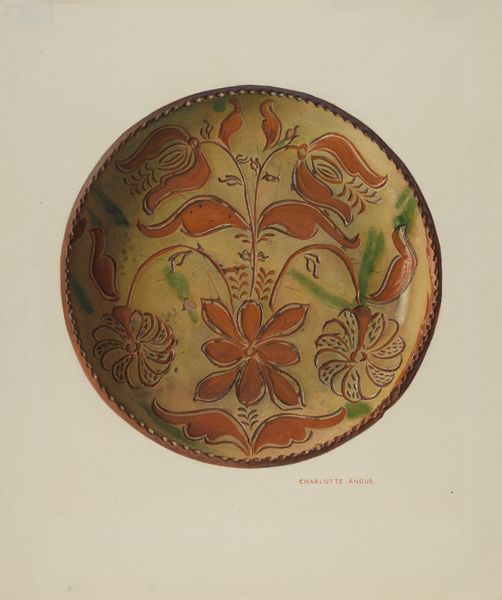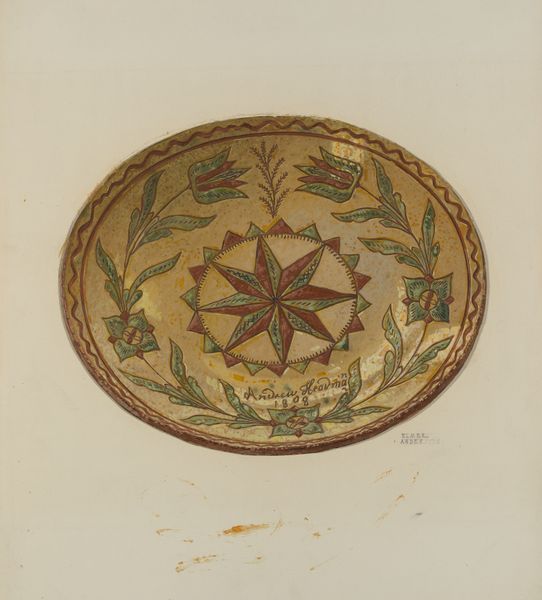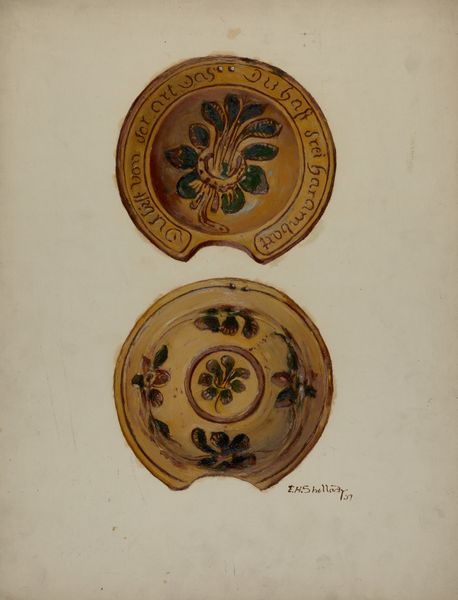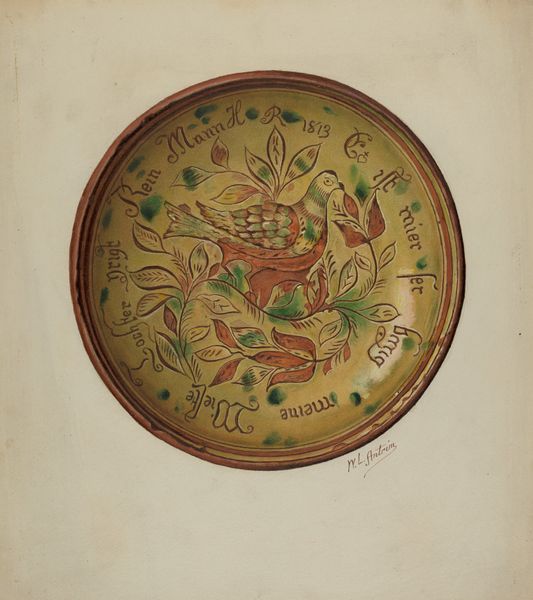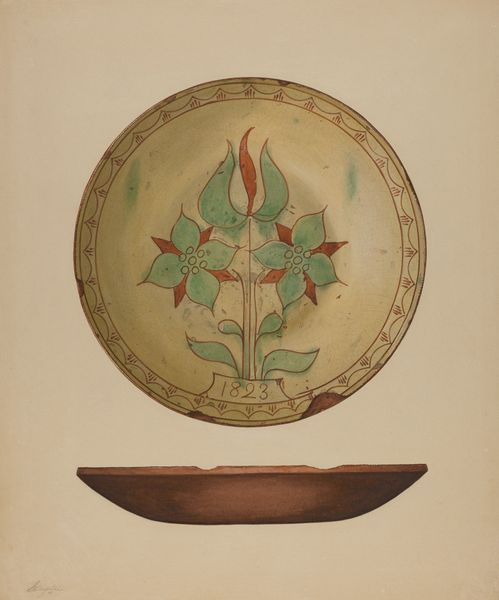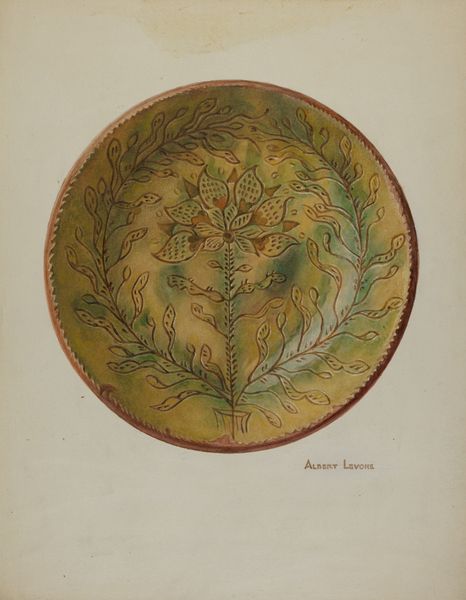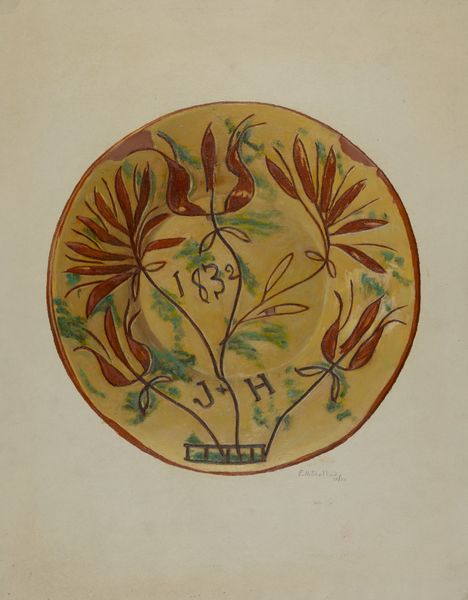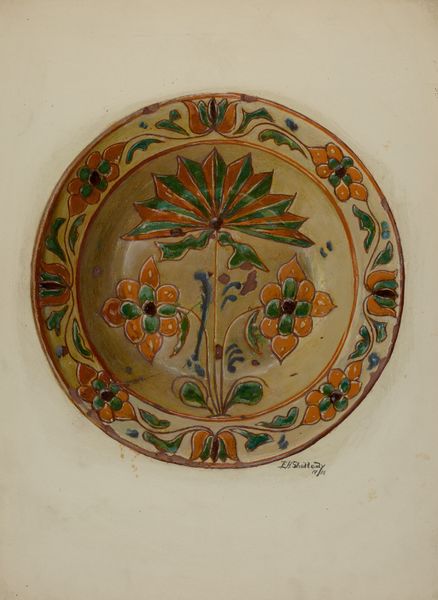
watercolor, earthenware
#
watercolor
#
earthenware
#
folk-art
#
earthenware
#
watercolour illustration
#
decorative-art
#
watercolor
Dimensions: overall: 50.6 x 40.5 cm (19 15/16 x 15 15/16 in.)
Copyright: National Gallery of Art: CC0 1.0
Editor: So, this is William Antrim's watercolor of a Pennsylvania German pie plate, dated around 1936. It's a pretty straightforward depiction, but there's a simple charm to the folk art style. What do you see when you look at it? Curator: Well, immediately, I’m thinking about the revival of folk art forms in the early 20th century, particularly as a reaction against industrialization and mass production. Reproducing this plate in watercolor – what’s the statement there? Editor: It’s almost like preserving a cultural artifact, isn’t it? Curator: Precisely! The Pennsylvania Germans were deliberately creating an aesthetic associated with handmade goods and their unique cultural identity. Think about how these pie plates functioned within that community: as objects of utility, yes, but also carriers of symbolic meaning related to prosperity and heritage. And how these symbols changed meaning through mass reproduction and industrial manufacturing. Editor: That makes me wonder if this watercolour copies directly from a pie plate. The date is quite early... I notice it also says 1793 in the picture. Why paint it nearly a hundred and fifty years later? Curator: That "1793" etched on the pie plate… That is not the creation date but a date referring back to a time, claiming an authenticity tied to their heritage. So Antrim would then make an homage by replicating this in watercolour decades after it was actually created, drawing viewers' attention to both historical craftsmanship and contemporary artistic practice. It highlights the value placed on heritage and handcrafted items, but the value that mass-manufactured pie plates lack. Editor: So it’s not just about the pie plate itself, but what it represents about cultural identity and changing values. Thank you! I didn't see how it would relate to the society around its creation. Curator: My pleasure, that's how these objects become cultural artifacts for future generations!
Comments
No comments
Be the first to comment and join the conversation on the ultimate creative platform.
